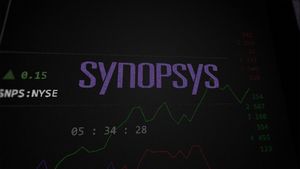
As the big banks begin reporting earnings, will investors get some insights into whether higher interest rates will mean pressure on profits.
First up are JPMorgan Chase & Co. (NYSE: JPM), Wells Fargo Co. (NYSE: WFC) and Citigroup Inc. (NYSE: C). Those reports will likely offer hints as to whether the bigger financial institutions are seeing consumers and businesses pulling back from borrowing and spending.
Next week, reports from Bank of America (NYSE: BAC), Goldman Sachs Group Inc. (NYSE: GS) and Morgan Stanley (NYSE: MS) will shed more light on those behaviors, and whether the sector is in for a slump.
So far, despite rising inflation, consumer spending has remained robust.
For example, Delta Air Lines Inc. (NYSE: DAL) said on October 12 that it continues to see worldwide strength in bookings, adding that travel is still a "top purchase priority" for its customers. It boosted its revenue forecast.
Rising interest rates could threaten numerous industries, including financial services.
Inflation Making a Comeback
The prospect of inflation remaining high has resumed. The consumer-price index increased by 3.7% year-over-year in September, after analysts and investors had believed inflation was cooling off.
The Financial Select Sector SPDR Fund (NYSEARCA: XLF) is down 4.47% in the past month, underperforming the S&P 500, which is down 2.52% in that time.
The largest banking component in the finance sector is JPMorgan Chase, which is down 0.36% in the past month. That’s not what’s leading the sector lower.
However, big bank stocks may not be at the same level of risk as the regionals.
The SPDR S&P Regional Banking ETF (NYSEARCA: KRE) rallied in June and July after being smacked around as a result of the crisis at Silicon Valley Bank in March. However, that rally attempt rolled over in August.
The ETF tracks the S&P Regional Banks Select Industry Index, which measures performance of the U.S. regional banking sector.
In the past month, the ETF is down 4.69%. Year-to-date, it’s posted a decline of 27.92%.
Rising Rates Hurting Regional Banks
The ETF’s underlying index includes companies operating regional banks and thrifts.
In banking terms, a thrift refers to a financial institution that primarily specializes in savings and mortgage lending activities.
Thrift institutions are often associated with providing financial services to individuals and households, rather than businesses. They offer savings accounts, certificates of deposit, and mortgage loans. The term "thrift" is sometimes used interchangeably with "savings and loan association" or "savings bank."
Thrifts are known for their focus on promoting savings and homeownership, often emphasizing the mortgage side of their businesses.
Higher Rates Hurting Mortgage Business
With rates being significantly higher, fewer mortgages are being originated. That’s a concern among investors who believe regional banks may be in for some rough times.
The KRE ETF could be a canary in the coal mine, when it comes to the impact of interest rates on regional banks.
The ETF’s largest components and their one-month returns are:
Those performance numbers show you how dire the overall regional banking industry appears to be right now.
In fact, some regional banks are at risk of being booted from the S&P 500 due to low market capitalization. Zions Bank and Comerica Inc. (NYSE: CMA), with market caps of $5.214 billion and $5.495 billion, respectively, are among the smallest in the S&P 500.
Regional banks are currently facing numerous challenges, including unrealized losses on long-dated securities, which was part of the problem that brought down Silicon Valley Bank. Others include outflows of deposits to larger banks, lower profits due to higher funding costs as interest rates rise, potentially weakened loan portfolios, and new debt level requirements.
Don’t be surprised if earnings reports from the larger U.S. banks influence what happens with stocks of regional banks, which are at potentially greater risk.





